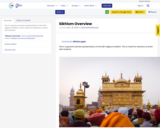
This is a general overview (presentation) of the Sikh religious tradition. This is meant for teachers to share with students.
- Subject:
- History/Social Sciences
- World History
- Material Type:
- Lecture
- Date Added:
- 12/17/2019

This is a general overview (presentation) of the Sikh religious tradition. This is meant for teachers to share with students.

Learn about the music of Brazil. Have you ever wondered how music transforms from notes on a page to something so beautiful it can touch our souls? Mike travels to Harrisonburg, VA to meet a pianist from Brazil, who teaches us about the music of Brazil and performs a lively piece on the piano. Mary guides us in moving our bodies to all of the different musical sounds and we learn to sing a children’s folk song in Portuguese.
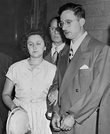
The purpose of this lesson is to help students understand the U.S. foreign policy toward the Soviet Union during the Cold War. It focuses on spying and includes the Rosenbergs, Alger Hiss, and U-2 Pilot Francis Gary Powers. Students will analyze primary and secondary sources while working in groups and individually.

Take a glimpse inside the Oval Office and discover the story of American diplomacy in Statecraft: The Bush 41 Team. When George H. W. Bush assumed the American Presidency in 1989, much of the world was in turmoil, and it was clear that American diplomacy was entering a new era. Learn about the Cold War struggle between the Soviet Union and the United States and how the foreign policy team of President George H. W. Bush guided the country and the world. Statecraft: The Bush 41 Team explores a series of major upheavals through the recollections of the individuals who faced them. In this collection, you will find short-form videos from the original film about the team and the events that the George H. W. Bush administration faced from 1989 to 1991. These media resources help educators to learn more about the individuals and the rapid changes that they faced. Statecraft: The Bush 41 Team is a co-production of VPM and the University of Virginia’s Miller Center.
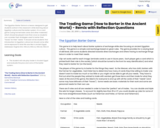
The Egyptian Barter Game is a lesson designed to get students active in the classroom while learning about Egyptian culture and the barter system. It is a card game (using homemade cards and other materials) which should be played more than once so students can consider their strategies used to barter their "haves" for their "needs." It should not be students' first introduction to Egyptian culture but should come after some exposure to what life was like in ancient Egypt. Addresses Virginia SOL: HSS.2.9, HSS.3.2, HSS.3.8, HSS.3.9
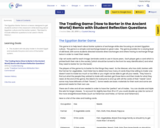
The Egyptian Barter Game is a lesson designed to get students active in the classroom while learning about Egyptian culture and the barter system.
*Remixed to include reflection questions to be used in World History I.
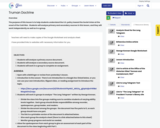
The purpose of this lesson is to help students understand the U.S. policy toward the Soviet Union at the onset of the Cold War. Students will analyze primary and secondary sources in this lesson, and they will work independently as well as in a group.

World War II was a complex event with battles in Europe, Africa, and the Pacific. Wars are more than battles. During World War II, the military were supported by civilian sacrifices and the workers at home. Their combined challenged and countered Nazi aggression in Europe. This Story Map will examine how the United States contributed to the Allied victory in Europe during World War. Three major topics will be addressed:support for Europe before the U.S. declared war on on Japan and then Germany in 1941, support from the home front, and the human and historical significance of D-Day.? Contains links to student materials and teacher materials for creating lesson plans.

This inquiry focuses on understanding how the Kingdom of Mali became a center of wealth in West Africa. The questions, tasks, and sources in this inquiry asks students to analyze a variety of primary and secondary sources to determine the most important factor for generating wealth in Mali: geography, trade, or religion.
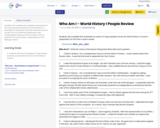
Students will complete this worksheet reviewing 25 of the most important people from World History I. A description of the person and their achievements are proved. You can make this assignment more challenging by taking out the word bank. This is a great end of course review in preparation for SOL testing or exams.
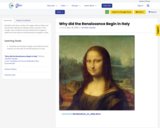
Students will view a series of images without titles and should first attempt to identify what is shown in the image. Then students should analyze the images to determine the reasons the Renaissance began in Italy.
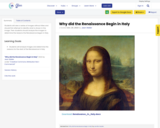
Students will view a series of images without titles and should first attempt to identify what is shown in the image. Then students should analyze the images to determine the reasons the Renaissance began in Italy.
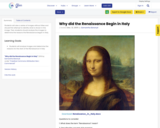
Students will view a series of images without titles and should first attempt to identify what is shown in the image. Then students should analyze the images to determine the reasons the Renaissance began in Italy.

Interactive Google Slides - Drag and drop venn diagram activities that can also print off as worksheets. Includes Answer Keys!Venn Diagrams Included:Paleolithic v. Neolithic ErasEgypt v. MesopotamiaHinduism v. BuddhismAthens v. SpartaMayans, Incas, & Aztecs matching
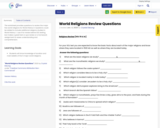
The worksheet provides questions to review the major five world religions for World History II. Questions could be added to include additional religions studied in World History I. I use it for review before SOL testing, but makes a great test or quiz review or a homework assignment to asses understanding and comprehension.

The student or small groups will compare and contrast the major events of World War I and II, as a review activity. The student(s) will sort the responses to show the similarities and differences between the 2 World Wars and their outcomes. This Learning Experience can be implemented individually, in a small group, or “draw a random student in class” type of learning experience.